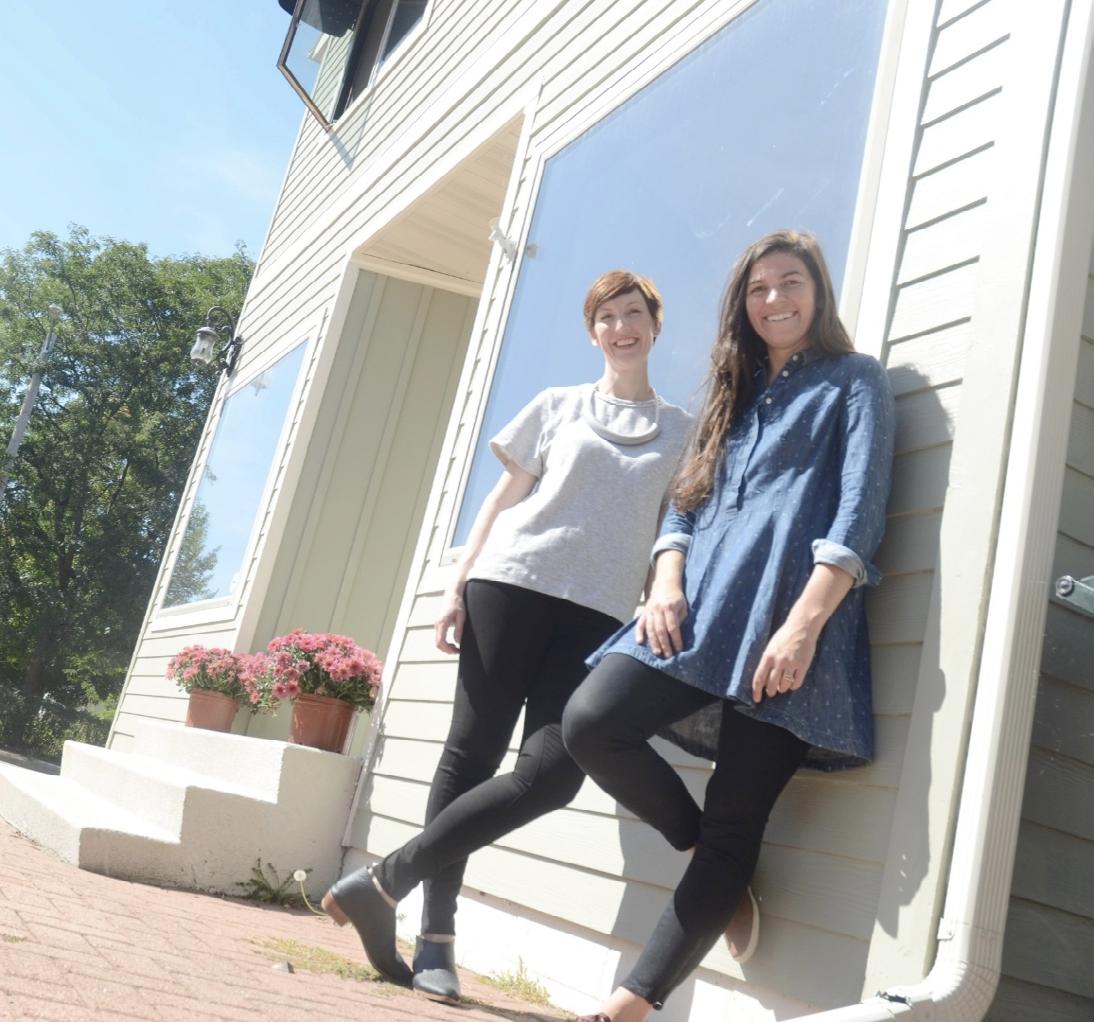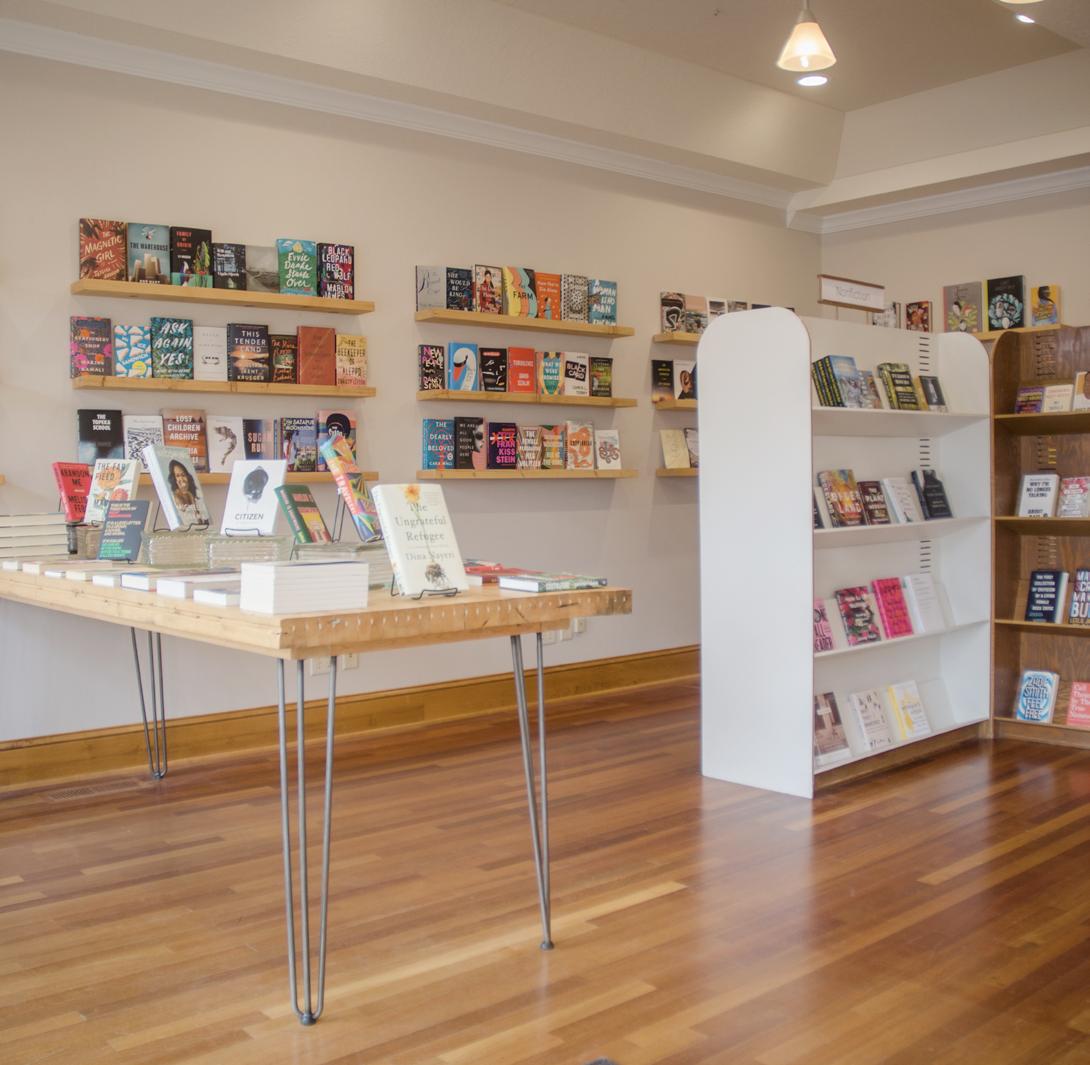
7 minute read
Reading on the Run
Binge reading on the run because everything else can wait.
ABOUT THE COLUMNIST
I live in remote Alaska where I work 40+ hours a week at my day job, write novels, and own a pop-up book shop. In my spare time, I chase after grandbabies and go running with my giant puppy, Omar. Always, I carry a book in my purse. I never know when I’ll get a few minutes to indulge in a good read. Fifteen minutes before dawn, at lunch, bundled up in my car by the river, or right before falling into bed. Reading is my resting place.
THE WRITERS BEHIND THE BOOK COVER.
BY V. JOLENE MILLER
I grew up in the ‘80s. I remember the Atari game, chasing lightning bugs, TV dinners, getting up to change the channel, reading the Trixie Belden series (any other Trixie fans out there?), and the book covers I made out of brown paper sacks for my junior high textbooks.
Did you ever make those? Anyone who made their own book covers knew it was imperative to also have a 6-in-1 retractable ballpoint pen for drawing and doodling on the cover. Those were the days. You could literally Algebra or Earth Science behind your decorated brown paper book cover. Whether they’re used to protect the book, disguise the book, are used as a bookmark, or as a way to disguise the content of what you’re reading, book covers are masks.
They even act as a mask for the author. Wait. What?
Ever stop and think about what lives behind the cover of a book? Beyond the cover image, the title, and the categorization of the book (novel, memoir, travelogue, etc.). What exactly is between the covers? What butts up against the inner side of the spine that faces outward on the bookshelf for all the world to see? And, I don’t just mean the letters that form words and sentences and paragraphs.
As a reader who is also a writer, I find myself thinking about the people behind the cover. Not only the characters, who are amazing in their own right, but the authors too.
We all have ideas about what the writer’s life looks like. Even I imagine a picturesque scene of an author behind her desk with the perfect beverage in the perfect mug as she types feverishly away at the perfect, bestselling novel before heading down to the bank to cash her perfect (and hefty)
royalty checks. Surely, I’m the only writer with imposter syndrome. I’m the only writer who can’t think of basic words, or the one who paints her characters into a corner so tight she can’t help them find their way out so the story just stops dead in its tracks as every other writer is effortlessly producing stories…Say it isn’t so!
The truth is, some of those books you read are written by authors whose real lives are hidden behind the gorgeous covers of their books.
Glenda Thompson, author of Broken Toys, used to be an emergency medical technician. Imagine the traumatic scenes she’s experienced.
Tara Wine-Queen, author of Tenderness and Troubling Times, wrote “The Baby Losers Club” after experiencing a near miscarriage.
Tami Lund, author of Into the Light, book 1 of The Lightbearer series, lost her son to suicide almost five years ago.
Michele Mathews, author of Be Strong and Pinky Swear, was estranged from her daughter and is working toward rebuilding their relationship.
They say that for a writer to do their job well she has to do two things. First, a good writer has to chase their characters up trees and then throw rocks at them. This is at the heart of a solid book. You create a character, give the character a goal, and then spend 300 pages creating obstacles for the character to run through in order to achieve said goal. Second, a good writer has to weave a tale so great that she causes her readers to emote. And, if we’re not moved when we write the story, we can guarantee you won’t be moved when you read it.
Yet, how does a writer delve into a storyline when she’s experiencing hardship or pain?
Glenda Thompson faces the gritty, raw episodes of our broken world. She writes about pain in a way that lets readers believe there’s hope and good in the world to balance the bad. Be careful where you step when reading her book, there are rattlesnakes everywhere.
Tara Wine-Queen and Michele Mathews explore more common life events in such a manner that anyone can pick up their books and relate to the characters. Tissues might be necessary.
Tami Lund writes contemporary and paranormal romance. Based on the covers, love and lust are in the air.
It’s similar to the way readers escape life with a saucy story, a clever character, or a romantic comedy. Writers pick up their pens, outline the draft and get to know the setting. They dream up characters so real, it’s as if they’re close friends.
Behind the cover is where we go, readers and writers alike, to get away from it all or to see it from another point of view.
Dotters Books.

EAU CLAIRE, WI
FEATURED INDIE BOOKSTORE
TELL US A LITTLE ABOUT YOURSELF AND HOW YOU CAME TO OPEN DOTTERS BOOKS.
DB: Books have always been my favorite thing, and since I was very small I've wanted to own a bookshop. Part of the reason my husband and I moved to Eau Claire was because there was no independent bookshop. After the birth of my daughter, I was looking to get involved so I joined a local book club started by Elizabeth de Cleyre (one of our co-founders). After our first meeting, myself, Jill Heinke Moen (our co-owner) and Elizabeth started talking and I mentioned that I always wanted to open a bookshop. A week later, we were talking through ways to make that happen. We operated as a popup shop for a little over a year, setting up at various local businesses around town. Then, after we found the perfect space, we decided to open a brick and mortar in late September 2018.
WHAT KIND OF READING TRENDS DO YOU SEE WITH YOUR CUSTOMERS?
DB: In 2017, when we started Dotters Books, we determined that one of the most important parts of our shop would be stocking books by women and BIPOC (Black, Indigenous, People of Color) authors. We felt that amplifying these voices would signal to publishers that book lovers value traditionally marginalized perspectives. We want every single person to walk into our shop and see themselves somewhere on our shelves - from children's books to fiction to nonfiction and everything in between. With that as our ethos, we found that customers responded really well to the books on our shelves.
WHAT DO YOU LIKE THE MOST ABOUT OWNING AND WORKING IN AN INDIE BOOKSTORE?
DB: Most everything! I love books and I love to help others find a book that fits their needs. Whether they're looking for escape, education, challenge, a wonderful story, it's a privilege to put a book into their hands that they're excited about. Then, when they come back into the shop, I love to hear their
thoughts on the book. It's such a special way to get to know people; to listen and learn from people with different experiences and ideas about the world. I'm so thankful for the book community in the Chippewa Valley.
WHAT DO YOU THINK THE FUTURE OF INDIE BOOKSTORES WILL LOOK LIKE?
DB: I would imagine that lots of shops have had to make huge modifications to their businesses in order to sell books online during the pandemic. I think this is a positive step forward as there are many in our community who need that accessibility. This pandemic has highlighted the importance of recognizing difference and responding in a way that all are included. If that means that events continue to run both virtually and in-person so that more people can be reached, I'm all for it. Our shop has been able to sponsor large virtual events in our community that would not have been able to happen in real life as a result of budgets and travel. I'm sure we've all watched events all over the country with wonderful authors - leading to even more connection in the book community. I think this is the future. Perhaps I'm overly optimistic, but I hope we come through this time with the feeling that we're more connected than ever.
WHAT IS THE IMPORTANCE OF KEEPING INDIE BOOKSTORES THRIVING?
DB: Independent bookstores are irreplaceable. Yes, we've all modified our businesses in order to survive through a pandemic, but when things are able to open safely again, I have no doubt that people will be flocking to places of community - locallyowned restaurants, record stores, boutiques, bookshops - coming together with the people who've continued to connect despite the distance. Shopping for books online is convenient and currently necessary, but real life community and connection cannot be replaced by an algorithm.












